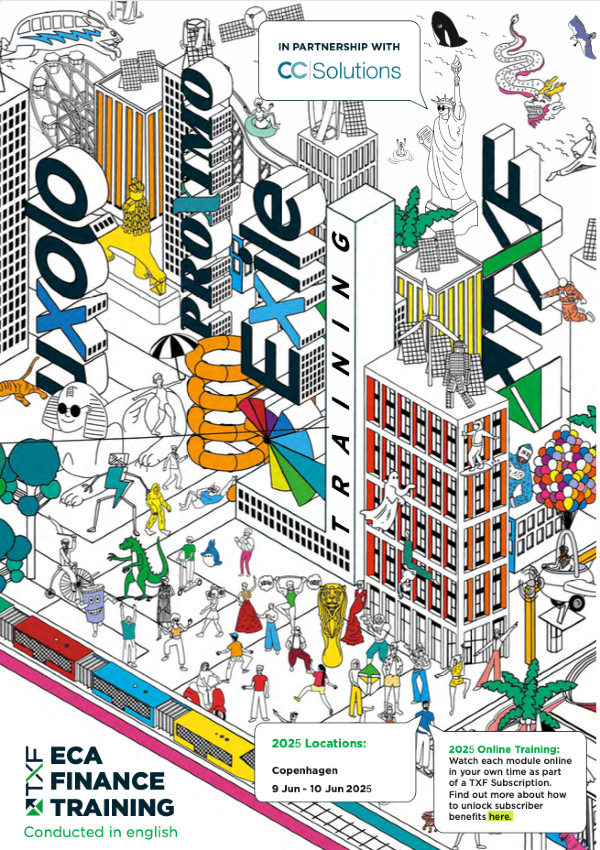TXF Americas: The land of ECA opportunity
The top takeaways from TXF Americas in Miami last week reflect both the need for ECA adaptability and greater support for small-ticket business, with energy transition at the forefront of the export finance mandate.

When the Mayflower docked in Plymouth, Massachusetts in 1620, America was yet to be coined the land of opportunity. Over half a century later the export finance community landed in Miami for TXF Americas 2023 with similar buoyancy over what the future holds – despite ongoing geopolitical instability and economic turbulence in the region.
EPC inflationary pressure, high interest rates and a heightened risk perception has spawned ECA innovation in the wake of the pandemic and war in Ukraine – but further export finance adaptability is paramount to realising the race to net zero emissions by 2050. Pushing out tenors, upping flexibility, and increasing collaboration between DFIs and ECAs were the main takeaways. A familiar mantra.
The announcement US Exim is looking to up its activity globally, particularly for direct lending on large-scale project finance deals was another cause for jubilation among delegates and speakers. But calls for greater support for small tickets from the US ECA was a familiar sentiment, long echoed through the plenaries of TXF conferences.
The two most active ECA-backed sectors in the Americas will continue apace. Transport has accounted for roughly a third of overall deal flow in the region over the past three years ($3.4 billion in 2020; $4.5 billion in 2021; and $4.2 billion in 2022), with metals and mining not far behind in terms of overall volumes ($3.4 billion in 2020; $2.12 billion in 2021; and $977 million in 2022), according to TXF Intelligence’s data.
Expect several cruise ship deals this year from Carnival and MSC, new telecoms transactions, and the critical minerals and mining sector in LatAm to mushroom given the stronger focus on energy transition from project sponsors, banks and ECAs. The pipeline of renewable projects is poised to proliferate too, with a potential plethora of floating solar projects in Brazil on the horizon. Lithium batteries are yet to appear on the ECA radar though as social infrastructure schemes dominate big-ticket project finance flow across the Americas.
But without further ado, the top takeaways from TXF Americas are:
- US Exim is active and out for big-ticket business and plans to “shake up the ECA game”. President and Chair Reta Jo Lewis’s opening remarks were steeped in optimism, with new framework agreements being inked with European ECAs for reinsurance, for example, in a bid to promote cooperation and manage capital.
- ECAs are adapting their product offering in the Americas with EKF mulling over tax equity complications to increase support for offshore and onshore wind schemes.
- Finnvera – which is eyeing telecoms and cruise deals in North America – is looking to up small-ticket support at earlier stages of the working capital cycle with the launch of its new direct lending programme, as well as more untied guarantees in the metals and mining sector in South America.
- Bpifrance is set to increase support to the Americas, having entered Columbia for the first time in 2022. EDC is commitment to LatAm despite the volatility and capacity constraints of financial institutions in the French ECA’s bid to open up new markets for Canadian exporters.
- ECAs and DFIs need to up collaboration across the Americas and beyond to provide a more holistic approach to project finance deals. Co-financings and reinsurance are higher on the ECA agenda going forward. For instance, new DFI FinDev Canada has never worked with EDC – but there is plenty of room for collaboration with $1.5 billion of capital looking to be deployed across sustainable commercial businesses globally.
- Supplier credits in local currency are high on exporters’ wish list in terms of the ECA product offering. Pre-export financing for up to 50% of the loan proceeds is another. Calls for Exim to support more small ticket deals with direct lending facilities is paramount for US exporters to be more flexible to their buyer’s needs.
- ECA-backed local currency financing is re-garnering interest from project bankers looking to mitigate risk on schemes with locally denominated revenues. Expect the son of Sergipe, another multi-billion-dollar LNG-to-power scheme in Brazil to be awarded to a Brazilian energy major this year, with international lenders finally looking to replicate the local currency project bond with an ECA wrap which offloaded FX risk from the banks to the Swiss ECA, Serv.
- Decarbonisation and sustainability remain at the top of the ECA mission statement. ECA support to the oil and gas sector has decreased from 2022 compared to 2021. On renewables front, lithium batteries are not yet on the ECA radar in the Americas and most ESG-related projects tend to be social infra schemes as opposed to renewable projects. But floating solar schemes in Brazil with ECA support are in the pipeline, as well as offshore wind schemes in the US.
- The Credit and Political Risk Insurance (CPRI) market is buoyant and yet to be hit by a claims crisis, and may never. The claims process is working though, especially in Ukraine. However, sovereign defaults on debt obligation in Africa are expected in 2023. After private market stagnation in the wake of the pandemic ECAs had to innovate to absorb the residual risk on the 15% down payment financing emerging market buyers traditionally need to tap an export credit. The CPRI market capacity and appetite is there to get involved in more deals in the Americas, from the short-term to medium to long-term.





